#foliose lichens
Text



Foliose lichens - Líquenes foliáceos
Carnaxide/Portugal (3/03/2024)
[Nikon Coolpix P900; 50mm; F7,1]
23 notes
·
View notes
Text







Punctelia borreri
Blinking speckleback lichen
This foliose lichen grows in rounded rosettes up to 10 cm in diameter. It has rounded, contiguous lobes which grow closely attached to the substrate. The upper surface is gray-green to place gray in color, and speckled with white, punctiform pseudocyphellae. It produces granular soredia out of those pseudocyphellae and out of capitate soralia. The lower surface is black toward the center and brown toward the lobe margins, with simple, black rhizines. It only very rarely produces apothecia which are bowl-shaped, and have a red-brown disc. P. borrei typically grows on the bark of deciduous trees in mild-temperate and humid climates. It is considered cosmopolitan as it is found pretty much all over. Also, here is a super cute historical drawing of it done in 1808 by Dawson Turner for its original description:
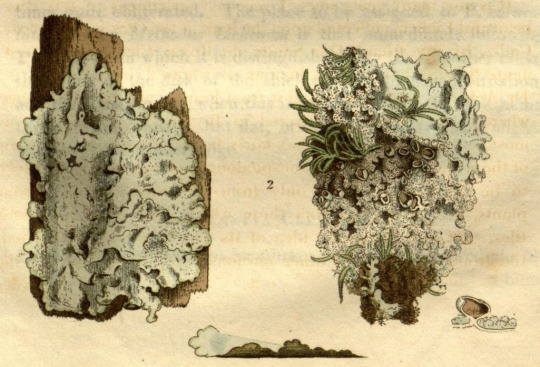
Future tattoo idea maybe?
images: source | source | source
info: source | source | source
#lichen#lichens#lichenology#lichenologist#mycology#ecology#biology#fungi#fungus#nature#symbiosis#symbiotic organisms#algae#phycology#life science#environmental science#natural science#Punctelia borreri#Punctelia#foliose lichen#i'm lichen it#lichen a day#daily lichen post#lichen subscribe#go outside#take a hike#look for lichens#trypo#trypophobia
86 notes
·
View notes
Text
girl help people on iNat are calling anything grey and lumpy Physcia stellaris again
#even if it's not remotely foliose#lichen#lichens#lichenology#inaturalist#girl help my post is incomprehensible
26 notes
·
View notes
Text

#here have some foliose lichen#as a distraction#bc thats what im trying to do#distract#from my deteriorating mental health#somehow im spiraling a lot more rapidly than i usually do#in a week we've gone from generally fine to genuinely believing none of my friends actually want to spend time with me#because im boring and melancholy and quiet#which like. i can see exactly why they wouldnt want to#it just sucks#and it also sucks because i know that some of it is blown way out of proportion by the worms in ye olde braine#woop woop#personal
2 notes
·
View notes
Text
i need to get better at identifying lichens and mosses......
#at the moment i can do the types of lichens crustose foliose fruticose but thats easy#i have no clue about mosses though.#lichen subscribe#at a moss for words#blue squawks
4 notes
·
View notes
Text
Thought people might want to see these specimens growing on my fence:
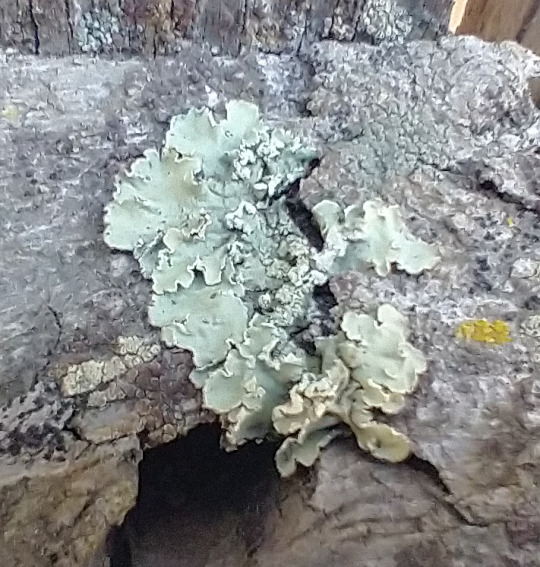
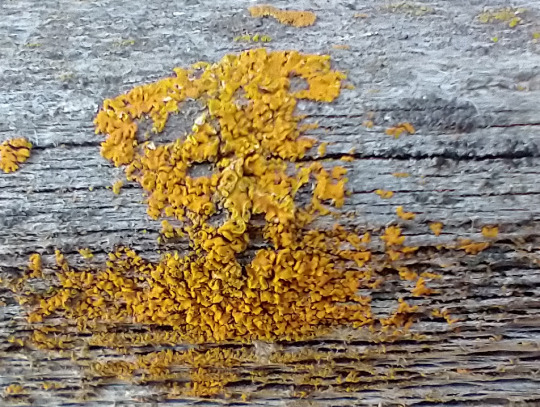
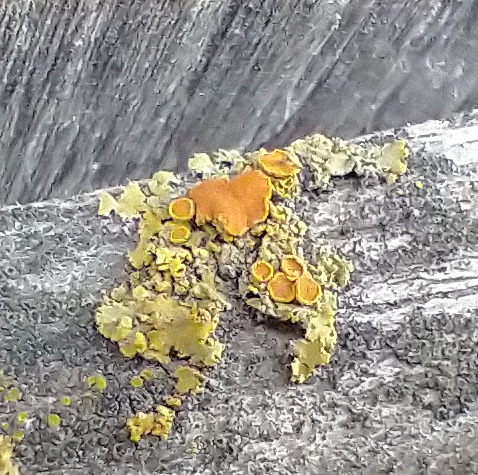

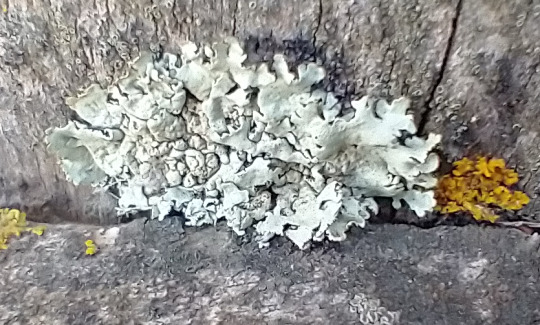
#mycology#lichen#wild fungi#foliose lichen#Visible podatia? I think?#Crustose lichen#If anybody would be interested in trying to identify these be my guest
0 notes
Text
Moth of the Week
Peppered Moth
Biston betularia

The peppered moth is a part of the family geometridae. It was first described in 1758 by Charles Linnaeus. This moth gains its name from its speckled coloration, which has been studied as an example of natural selection and population evolution.
Description This species has a short body with narrow forewings. The body and wings are the same white base peppered with black dots and irregular black lines. This speckled pattern may vary with some moths having very few spots and others having so many that they look as if they are black with white spots as opposed to white with black. In rare cases, the black on the wings and body is replaced with gray or brown and in even rarer cases the spots are a combination of brown and black/gray. These spots help the moth camouflage against lichen on trees.
The evolution of this moth had been studied extensively during the last two hundred years, which created the term “industrial melanism.” During the Industrial Revolution, air pollution killed off lichen and covered trees in soot. This caused moths with a black spots on white base (typica) coloration to lose their camouflage and die off due to predators. This caused a spike in population for moths with a darker coloration (carbonaria) because they had the camouflage advantage. Once environmental conditions improved, the lighter colored moths once again became the dominant coloration.
The male’s antennae are bipectinate, meaning it has two rows of rami going down either side of a singular flagellum.
Wingspan Range: 45 - 62 mm (≈1.77 - 2.44 in)
Diet and Habitat The caterpillar of this moth eats many trees, shrubs, and small plants such as Blackthorn (Prunus spinosa), Hawthorn (Crataegus monogyna), Downy (Betula pubescens) and Silver Birch (Betula pendula), limes, sallows, poplars, oaks, Sweet Chestnut (Castanae sativa), Beech (Fagus sylvatica), Bramble (Rubus fruiticosus), Broom (Cytisus scoparius), Black Currant (Ribes nigrum) and Hop (Humulus lupulus).
They have a wide range, being found in China (Heilongjiang, Jilin, Inner Mongolia, Beijing, Hebei, Shanxi, Shandong, Henan, Shaanxi, Ningxia, Gansu, Qinghai, Xinjiang, Fujian, Sichuan, Yunnan, Tibet), Russia, Mongolia, Japan, North Korea, South Korea, Nepal, Kazakhstan, Kyrgyzstan, Turkmenistan, Georgia, Azerbaijan, Armenia, Europe and North America. They prefer habitats of woodland, scrub, hedgerows, parks and gardens.
Mating Depending on its location, this moth can have one or two generations per year. In Great Britain and Ireland, the peppered moth has one generation per year, whilst in south-eastern North America it has two generations per year. They emerge from the pupea in late May to August.
The females attract males with pheromones, which are carried by the wind. Males follow the concentration gradient to find the female. The male guards the female from other males until she lays the eggs. The female lays about 2,000 pale-green ovoid eggs about 1 mm in length into crevices in bark with her ovipositor.
Predators This species is a night-flying moth, making the vulnerable to bats. The males in particular fly every night to search for a female while females fly only the first night.
To protect themselves from birds during the day, this species rests on lichen covered trees to camouflage themselves.
The day time resting positions of this moth have been recorded and studied. This study shows that the peppered moth prefers resting spots that are covered such as below where the trunk and a branch meet, the underside of branches, and leafy twigs.
Additionally, the study found peppered moths with a lighter coloration (typica) blend in better against crustose lichens rather than foliose lichens because birds can see ultraviolet light. The peppered moth reflects UV light while crustose lichens don’t, making them easier to pick out.
Fun Fact The caterpillars of the peppered moth resemble things in both color and size. An experiment published in 2019 done on the caterpillars of the peppered moth showed that the larva (even when blindfolded) could sense the color of the tree they live on and change their body color to match and/or would move to a different twig that was closest in color to their own body.
(Source: Wikipedia, Butterfly Conservation, Max Planck Institute)
#Biston betularia#libraryofmoths#animals#bugs#facts#insects#moth#lepidoptera#mothoftheweek#Geometridae#peppered moth
86 notes
·
View notes
Text
FOTD #130 : common greenshield lichen! (flavoparmelia caperata)
common greenshield lichen is a foliose lichen in the family parmeliaceae. it often grows on rocks & the bark of trees around the world :-) it is notably quite resistant to air pollution.
the big question : can i bite it??
this lichen is non-poisonous !!


f. caperata description :
"the common greenshield is fairly easy to spot : it looks somewhat like a leaf of lettuce glued to the side of a tree. its upper surface is usually pale yellow-green, but it becomes a deeper green when wet. the edges of the common greenshield are broken up into rounded lobes. these lobes are smooth when the lichen is small, but soon become wrinkled in medium to large specimens. towards the centre of the lichen, you will notice irregular rough patches."
[images : source & source]
[fungus of the day : source]
#• fungus of the day !! •#[flavoparmelia caperata]#: common greenshield lichen :#130#||#mycology#fungus#cottagecore#foraging#nature#fungi#earth#forestcore#lichen#fotd#fungus of the day#flavoparmelia caperata#common greenshield lichen
61 notes
·
View notes
Text
Our Microbial Ecology professor is offering us extra credit if we can find three different kinds of lichen. My lab partners were unsure where to find lichens but the answer is simple, everywhere! The slightly more complicated answer is that they grow in the places that other plants and fungus can't grow, with rocks and tree bark being the most common. I was able to find all of these, in my own yard in about 10 minutes.
There was a colony like this one growing on the foundation of our house but I didn't want to disturb it so I was glad when I found this lovely specimen on a rock in our landscaping.

This was also on the same rock, it isn't a great picture but you can see the little rhizones that are used to attach themselves to the rock.
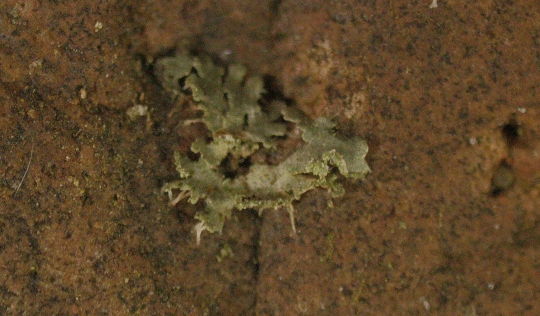
The reason lichens can grown on rocks and other inhospitable surfaces is because they are actually a symbiosis of two different organisms and there partnership is what makes it possible. Each lichen consists of mycobiont, a fungus, and a photobiont which is either an algae or a cyanobacteria. (a cyanobacteria is a kind of bacteria that can do photosynthesis.) The photobiont can produce energy through photosynthesis and the mycobiont can break down the substrate (yes, even rock) in order to get other nutrients that lichen needs to survive.
In fact here's another lichen I found on a rock in our landscaping. If you click on it to see the full sized image you can actually see the little grains of sand from the lichen breaking down the rock.
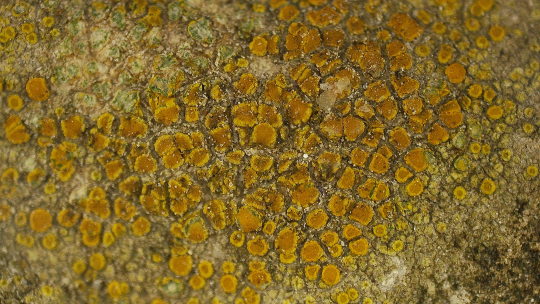
Keep in mind that this picture was taken at high magnification, to give you an idea of scale, here's the same lichen (or at least a very similar one) growing on a cement window sill at my kids school.

You can see how it might be overlooked as just some discoloration. If you've ever at an old cemetery, you'll see that a lot of the oldest headstones are pretty much completely yellow or orange, that's lichens.
This one was growing on a dead stick that had fallen off our apple tree. The round things are the apothecia, the reproductive structure of the fungal symbiont, that's why they often look like tiny mushrooms.

It can be very difficult to identify lichens to species because even lichens with different symbiotes can look very similar. If you were to disregard the apothecia, the one above looks a lot like the first lichen but the fact that they are on different substrates is evidence that they are different kinds. They aren't even the same growth form the first one is lobed and this one is foliose. I do own the keys to identify them, but I have yet to actually attempt to.
Lichen are also very particular about their habitat. The population on the apple tree (left) is very different from the population on the Cottonwood tree. (right)
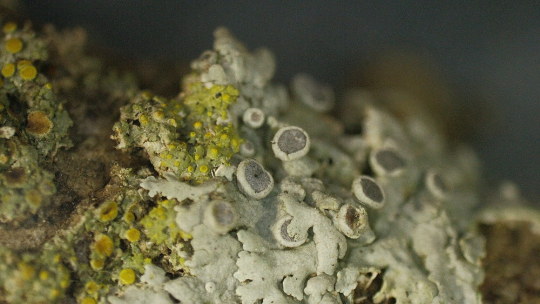

Disclaimer: all of these lichens are very common in this area and were either on loose rocks in our landscaping, bark that was already peeling off the tree or on dead branches. You should never collect lichens if you aren't confidant that they are well populated and it's best not to damage their substrate to collect them
Disclaimer 2: I am not a lichen expert by any means, the information here is correct to the best of my knowledge.
If you're interested, I have turned some of these pictures into desktop backgrounds, they can be found here:
44 notes
·
View notes
Text
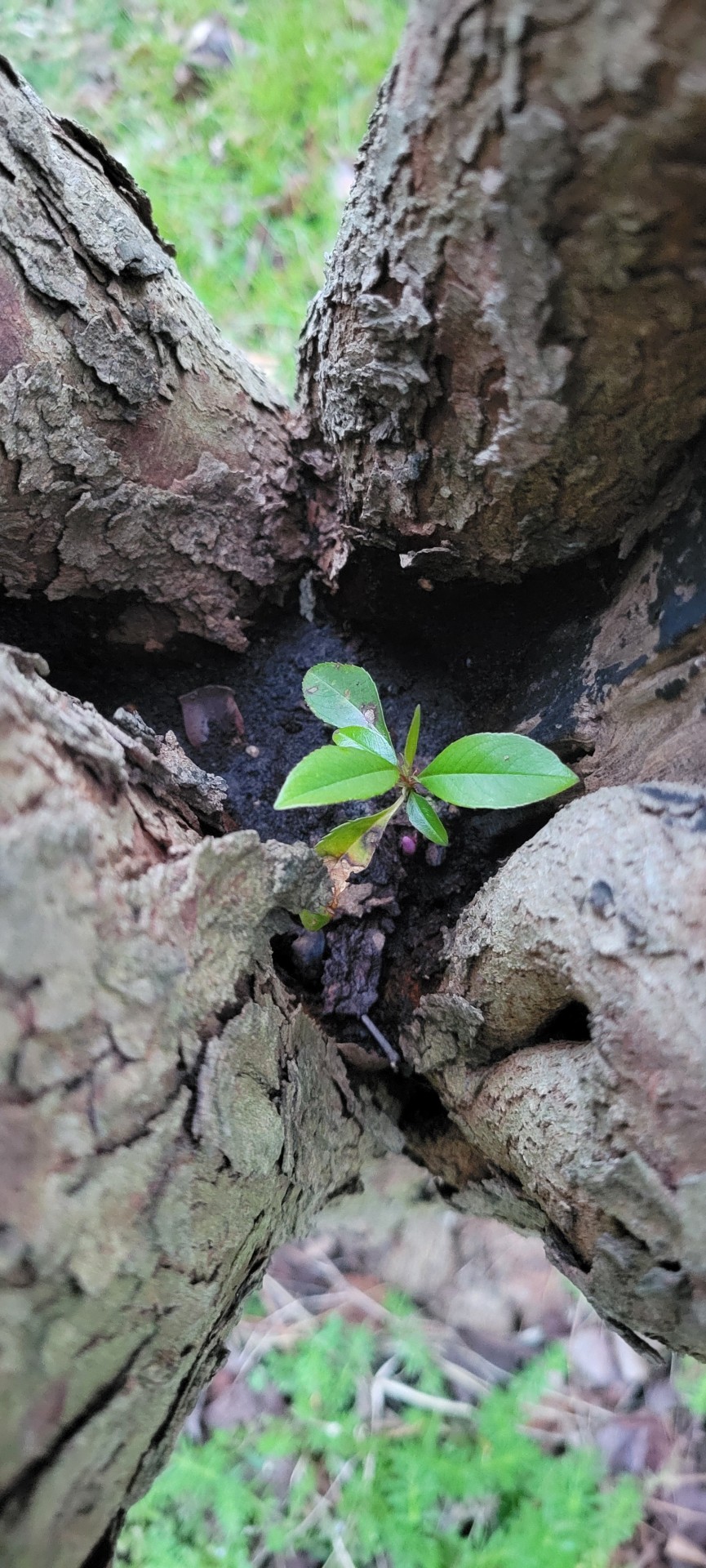
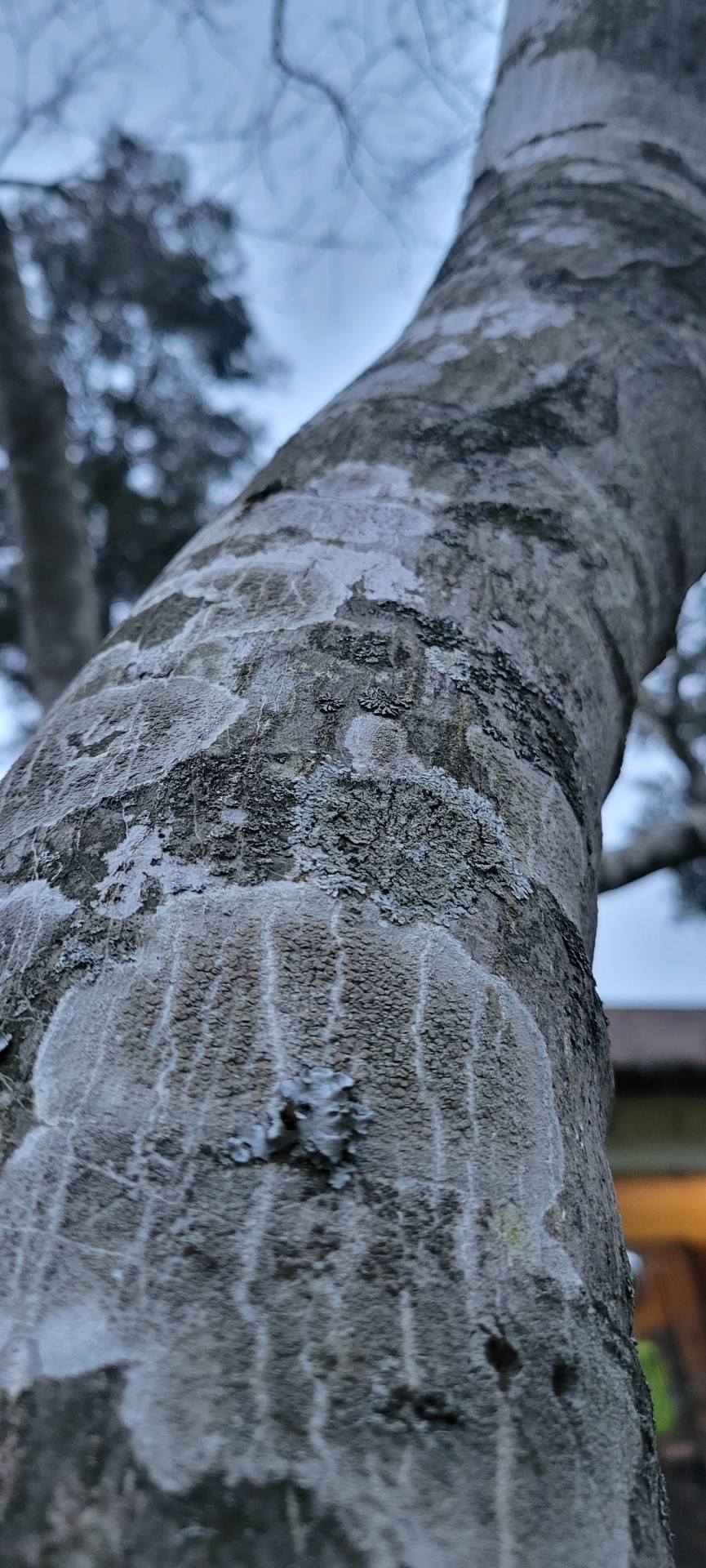

I suddenly found myself hyperfixated on nature last week. So, I'm starting a new blog to dump all of my identifications and learnings! I've taken a particular interest in fungi, trees, and birds, so I expect I'll be posting quite a bit about that. Here's to growing closer to the world around me!
pictures in this post:
1. A baby plant growing inside of an Eastern redbud in my front yard! (Cercis canadensis)
2. Some neat lichens (unsure of specifics, but there's a mix of crustose and foliose) on a Japanese maple (Acer palmatum)
3. A branch of leaves of a Hidcote St. John's Wort shrub (Hypericum hidcoteense)
#plants#plantblr#plant photography#nature#naturalist#trees#fungi#lichen#new blog#plant identification#escapism#hyperfixation#outdoors#explore
9 notes
·
View notes
Text
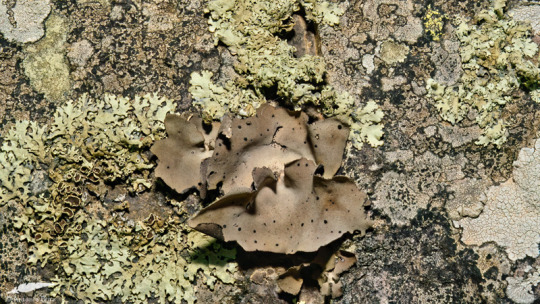
Umbilicaria sp
Mértola/Portugal (23/04/2024)
[Nikon D850;AF 105mm Micro-Nikkor F2,8m with Flash Nissin Di 700A; 1/250; F29; 400 ISO]
10 notes
·
View notes
Text



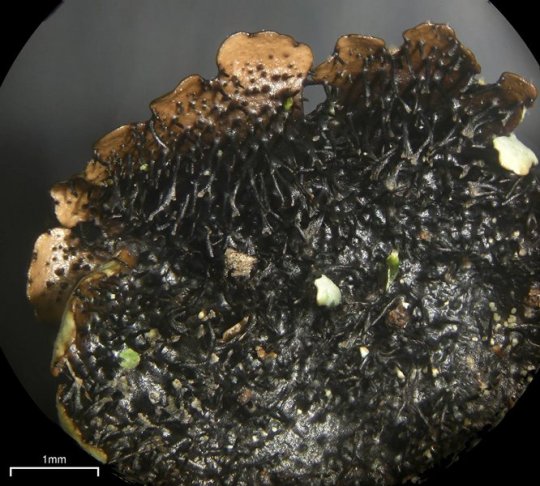
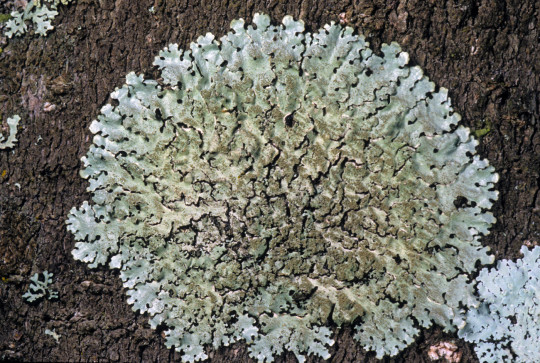




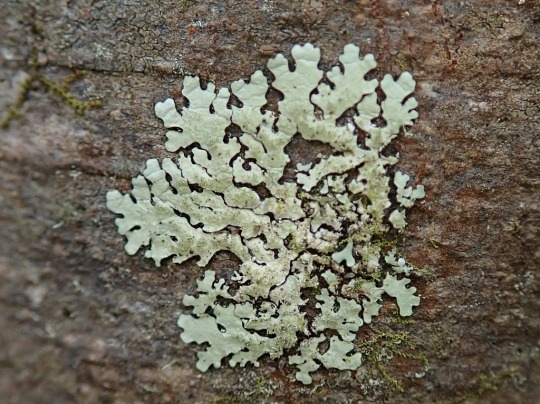
Hypotrachyna minarum
Hairless-spined loop
images: source | source | source
#lichen#lichens#lichenology#lichenologist#mycology#ecology#biology#symbiosis#symbiotic organisms#algae#foliose lichen#Hypotrachyna minarum#Hypotrachyna#fungus#fungi#nature#naturalist#beautiful nature#weird nature#natural science#environmental science#life science#I love lichens#lichens are so good
42 notes
·
View notes
Text
youtube
Watch the American Climate Leadership Awards 2024 now: https://youtu.be/bWiW4Rp8vF0?feature=shared
The American Climate Leadership Awards 2024 broadcast recording is now available on ecoAmerica's YouTube channel for viewers to be inspired by active climate leaders. Watch to find out which finalist received the $50,000 grand prize! Hosted by Vanessa Hauc and featuring Bill McKibben and Katharine Hayhoe!
#ACLA24#ACLA24Leaders#youtube#youtube video#climate leaders#climate solutions#climate action#climate and environment#climate#climate change#climate and health#climate blog#climate justice#climate news#weather and climate#environmental news#environment#environmental awareness#environment and health#environmental#environmental issues#environmental justice#environment protection#environmental health#Youtube
16K notes
·
View notes
Text


Some spare bryos and a lichens 4 u, ma'am
Nerd talk:
Left photo has numerous spp. of bryophytes (Porella sp., Frullania sp., Orthotrichum sp., Syntrichia sp.) as well as some foliose lichens (which I can't name bc I suck at lichens!)
Right photo is a sick graphidaceae lichen (graph = write in latin, the lichens are named such bc the black apothecia/fruiting bodies look like writing!)
23 notes
·
View notes
Text
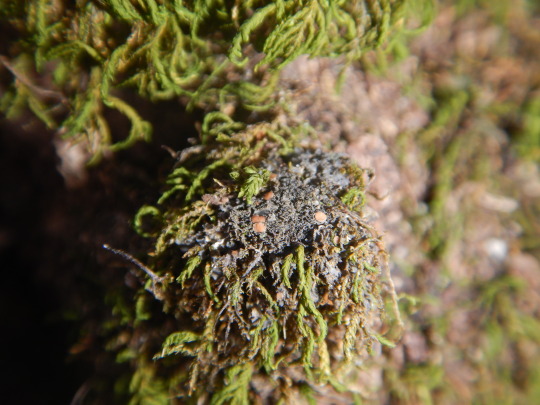
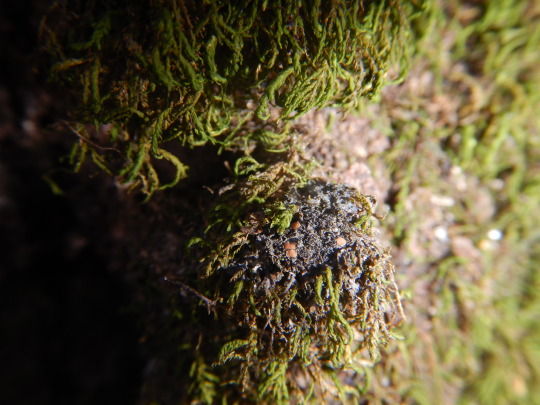
Scytinium juniperum apparently it's g4 rank which is wild and I think it's super under appreciated or at least not noticed enough because it occurs on tree buttresses on hills and also on rocks covered in dry formed Anomadon spp. aka tree skirt mosses and rock poodle mosses.
It's found in dry harsh conditions, which also can be associated to the same niche pelts are often associated with.
Oddly enough that squamulose plating on the thallus isn't the giveaway rather its that orange apothecia that is the indicator for the species of Scytinium. It really is more of a G5 species and could honestly be the easiest first lichen to get to know and a good one to introduce you to the juxtaposed family of collemaceae, or blue jelly skin lichens that all share the same photobiont associations for the most part. The family consists of humidity lovers more often than not and also more of an affiliation rather than the above species which likes more dry air conditions.
Next time your on a dry hill with an Anomadon covered rock look for a weird foliose black/darkblue matt intertwined in it!
10 notes
·
View notes
Text
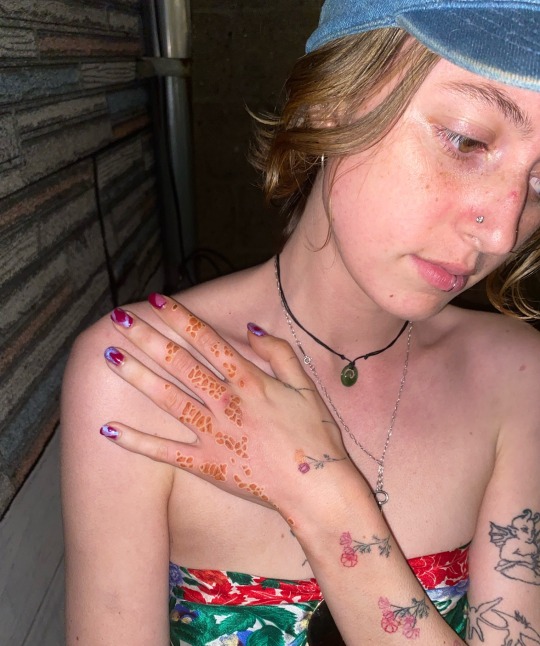
foliose lichen textures, freehand apothecia
2 notes
·
View notes
Text
#2064 - Cladia muelleri
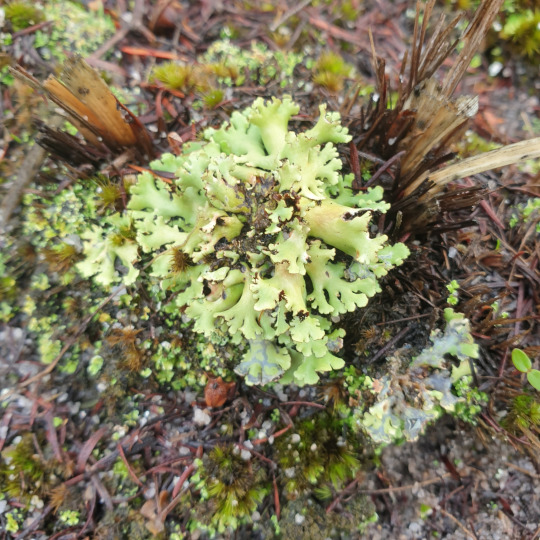
Formerly Heterodea muelleri, until 2012. Growing on clay soil, under Leptospermum.
A foliose lichen widespread in Australia but also in New Zealand and New Caledonia, usually growing on clay soils but it is found occasionally amongst organic litter, and often under trees or shrubs to take advantage of the shade. When wet it is a vivid green, sometimes yellow-green, mass of tightly-clumped lobes. When dry it curls up into yellow-brown to dark brown lumps. The species can be distinguished by a dense brown (occasionally black) mat of rhizines (felt-like hairs) on the lobes.
Most species in the genus are found in the Southern Hemisphere, and can vary very widely in form.
2 notes
·
View notes
Text
youtube
Watch the 2024 American Climate Leadership Awards for High School Students now: https://youtu.be/5C-bb9PoRLc
The recording is now available on ecoAmerica's YouTube channel for viewers to be inspired by student climate leaders! Join Aishah-Nyeta Brown & Jerome Foster II and be inspired by student climate leaders as we recognize the High School Student finalists. Watch now to find out which student received the $25,000 grand prize and top recognition!
#ACLA24#ACLA24HighSchoolStudents#youtube#youtube video#climate leaders#climate solutions#climate action#climate and environment#climate#climate change#climate and health#climate blog#climate justice#climate news#weather and climate#environmental news#environment#environmental awareness#environment and health#environmental#environmental issues#environmental education#environmental justice#environmental protection#environmental health#high school students#high school#youth#youth of america#school
16K notes
·
View notes